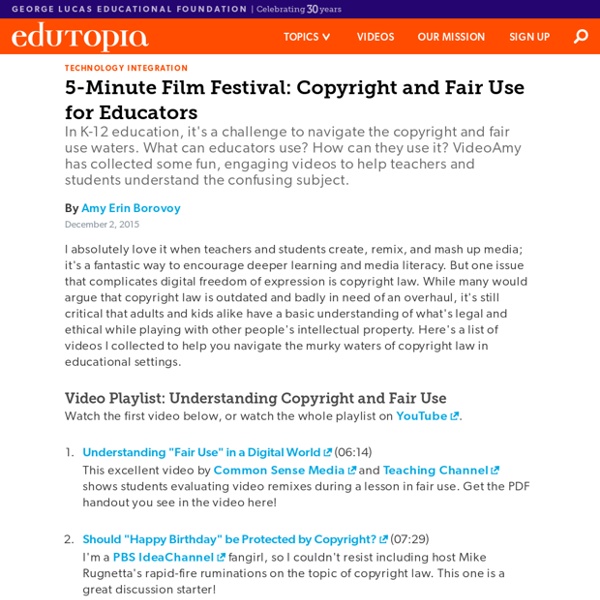Copyright Infringement: 5 Myths vs Facts
Embed Code Embeded for hosted site: Click the code to copy <div class='visually_embed'><img class='visually_embed_infographic' src=' alt='Copyright Infringement: 5 Myths vs Facts' /><div class='visually_embed_cycle'><span>by </span><a target='_blank' href=' <br/></div><script type='text/javascript' src=' class='visually_embed_script' id='visually_embed_script_88270'></script><p> From <a href='
Copyright
What is copyright? Copyright (or author’s right) is a legal term used to describe the rights that creators have over their literary and artistic works. Works covered by copyright range from books, music, paintings, sculpture, and films, to computer programs, databases, advertisements, maps, and technical drawings. Exhaustive lists of works covered by copyright are usually not to be found in legislation.
Glossary of Online Learning Terms
ASYNCHRONOUS LEARNING: When learners participate in an online learning course at different times, it is known as asynchronous learning. This might also be called eLearning or web-based training (WBT). Asynchronous learning allows learners to go through a course at their own pace and on their own schedule. AUDIO CONFERENCING: Audio conferencing refers to a connection between three or more locations that involves a voice-only connection.
Copyright for Educators
Copyright for Educators is a series of videos designed to help educators learn about what they can and can't do within the category of "Teaching" in the Copyright Act. Under the Copyright Act, there is nothing more intriguing and exciting for educators than Fair Use. Fair Use is the concept that if you are doing something for the greater good of society, like teaching, then your needs supersede the ownership rights of the copyright holder under the Copyright Act. Teachers, and by association, students, can legally use music, websites, videos, images, and a wealth of copyrighted materials for the purposes of teaching, that wouldn't be accessible otherwise.
A Copyright-Friendly Toolkit
However fabulous Creative Commons and Public Domain content may be, sometimes you really need to use copyrighted material. Say you plan to comment on popular media or current events. For instance, you may be planning to critique the portrayal of Native Americans in commercial films. You are going to want to “quote” some commercial films like Pocahontas, Lone Ranger, and Dances with Wolves. If you are reviewing a book, you may want to share its cover art. You may use copyrighted content without asking permission if you believe that your use falls under the doctrine known as Fair Use.
Distance Learning and Copyright: Is a Solution in Sight?
This article was published in CAUSE/EFFECT journal, Volume 22 Number 3 1999. The copyright is shared by EDUCAUSE and the author. See for additional copyright information. Distance Learning and Copyright: Is a Solution in Sight?
10 Free Resources for Flipping Your Classroom
Thanks to the folks over at Khan Academy, alternative modes of delivering classroom instruction are all the rage. We’ve got face to face models, labs, rotations, online-only, self-blend, and of course, flipped. While there are numerous ways to implement a flipped classroom, the basic components include some form of prerecorded lectures that are then followed by in-class work. Flipped classrooms are heralded for many reasons. For one thing, students can learn at their own pace when they’re watching lectures at home.
How to Find Public Domain and Creative Commons Images
In last week's survey of Free Technology for Teachers readersFlickr The Commons, Photos for Class, and Pixabay were chosen as the best places to find public domain and Creative Commons images. All three can be used to find images that can be re-used in a variety of presentation formats. The videos embedded below provide an overview of how to use each image source. Pixabay hosts high quality public domain images.
Results on ReadWriteThink
Find content from Thinkfinity Partners using a visual bookmarking and sharing tool. More Your students can save their work with Student Interactives. More Home › Results from ReadWriteThink
Copyright and Distance Learning Information: Tips & Resources for Educators : Copyright & Creativity
Print or download PDF Tips and Resources for Teachers and Administrators March 31, 2020



